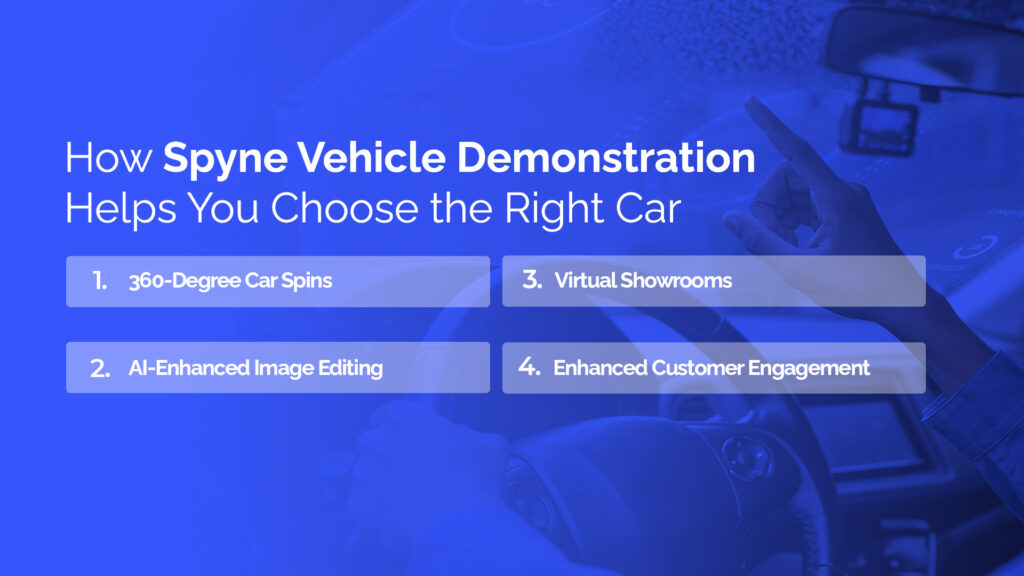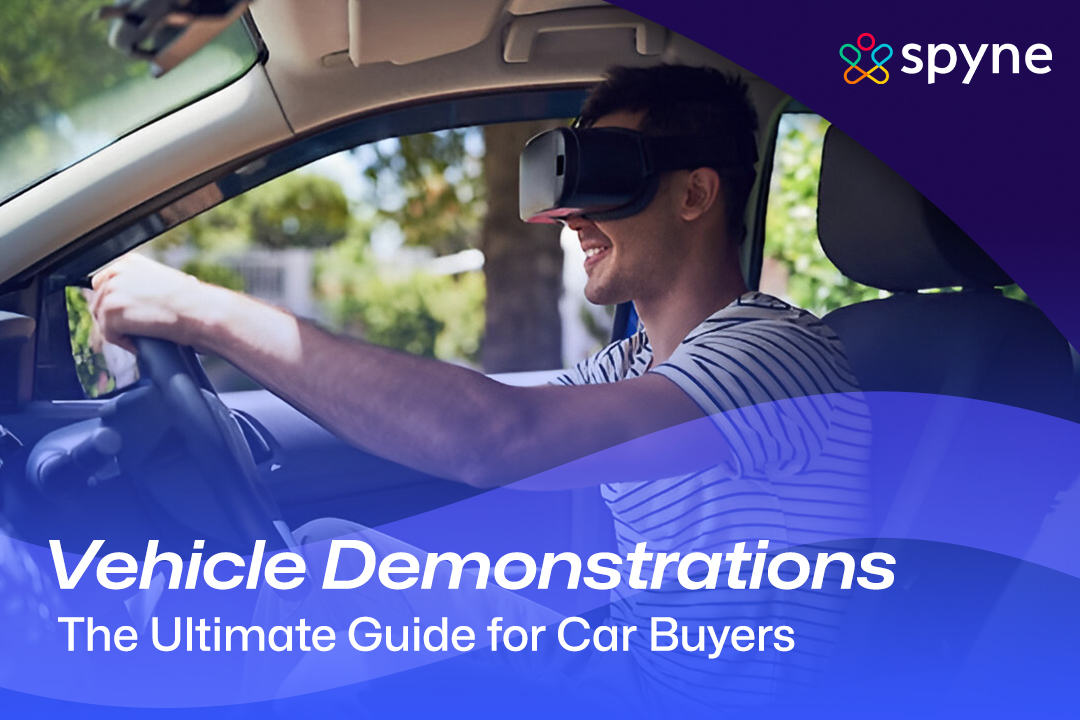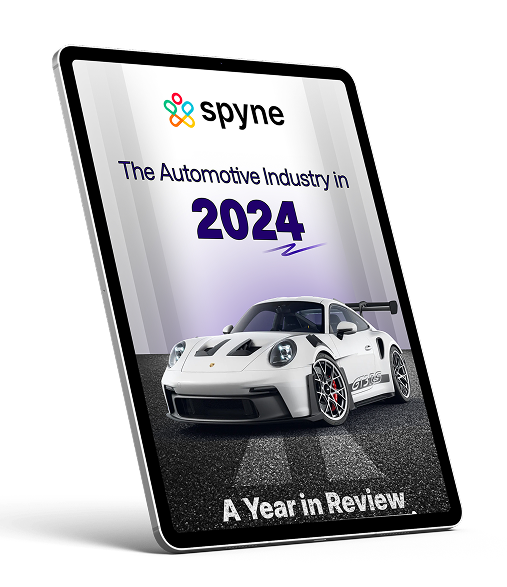A demonstration or demo car is a new car used for test drives, showroom displays, or as a dealership staff vehicle. These cars, often in high-demand models and top trim levels, help customers experience features before purchasing. Vehicle demonstrations allow buyers to test performance, comfort, and technology firsthand. Demo cars are typically under two years old, have low mileage, and remain unsold, meaning they qualify as new vehicles with full warranties, manufacturer rebates, and incentives. Unlike rental cars, some serve as service loaners or management vehicles but are well-maintained. When inventory is low, dealerships may sell these cars at discounted prices, offering a great deal on a nearly new vehicle. Whether showcased on the showroom floor or used for test drives, these vehicles provide a real-world preview, helping buyers make informed decisions before committing to a purchase.
What is a Demonstration Vehicle?
A Demonstration Vehicle is a car used by dealerships or manufacturers to showcase features, technology, and performance to potential customers. These vehicles are typically driven by dealership staff, used for test drives, or displayed at events to highlight the latest models. Unlike standard car inventory, a vehicle demonstration allows customers to experience the car firsthand before purchasing. Demonstration vehicles often have low mileage and are well-maintained, making them an attractive option for buyers looking for a nearly new vehicle at a lower price. They may come with manufacturer warranties and special discounts, adding value to the purchase. A vehicle demonstration is a marketing tool for manufacturers as it helps in building customer confidence and driving sales to automotive video marketing. Whether showcasing advanced safety features, infotainment systems, or driving performance, these vehicles play a crucial role in automotive video advertising by bridging the gap between interest and ownership.
Types of Vehicle Demonstrations
Car demonstrations come in different formats, catering to varying customer needs and technological advancements. These include:
Live Demonstrations
These are conducted at a dealership or showroom, where customers can physically inspect, test drive, and interact with the car.
Virtual Demonstrations
Leveraging AI and 3D visualization, virtual demos provide an interactive digital experience, allowing users to explore the vehicle from anywhere.
Pre-Recorded Video Demonstrations
These are structured presentations highlighting key features of the vehicle and vehicle video walkaround content, often hosted on a dealership’s website or social media platforms.
Augmented Reality (AR) and Virtual Reality (VR) Demonstrations
Cutting-edge technology enables immersive experiences, allowing customers to see and interact with a vehicle in a digital environment.
Key Features to Highlight During a Vehicle Demonstration
A vehicle demonstration should highlight key features to influence buyers. Explain fuel efficiency, hybrid options, and eco-friendly tech. It also highlights infotainment with touchscreen displays, smartphone integration, and premium audio. Lastly, showcase smart features like keyless entry, remote start, and parking assist. A concise, engaging demo helps customers make informed decisions. A successful vehicle demonstration should emphasize the following key features:
Exterior Design & Build Quality
A car demonstration should highlight the body style, paint options, lighting, and overall aesthetics to give the customer an after-sales experience.
Interior Comfort & Features
A vehicle demonstration has to showcase the seating materials, dashboard layout, infotainment systems, and legroom to give potential customers a detailed experience.
Performance & Handling
Engine specs, transmission, acceleration, and driving dynamics are some aspects that should be considered while demonstrating a vehicle to potential customers.
Safety & Technology
Any vehicle demonstration must include a demonstration of ADAS (Advanced Driver Assistance Systems), airbags, lane assist, and emergency braking.
Fuel Efficiency & Sustainability
Potential buyers might want to discuss mileage, electric or hybrid capabilities, and eco-friendly options, which is why these aspects are essential during a vehicle demonstration.
Infotainment & Connectivity
Highlight touchscreen interfaces, smartphone integration, and in-car Wi-Fi capabilities.
How Technology Enhances Vehicle Demonstration Experiences
Technology has transformed the way vehicle demonstrations are conducted. 3D visualization allows customers to explore 360-degree car spins for a detailed view. Augmented and virtual reality create interactive experiences, letting buyers engage with vehicles remotely. AI-enhanced image editing presents cars in different environments for better visualization. Integrating these technologies makes car demonstrations more engaging, informative, and customer-friendly. Some key advancements include:
3D Car Visualization
AI-driven tools like Spyne offer 360-degree vehicle spins, giving customers a detailed look at a car from every angle.
Augmented & Virtual Reality
Car Dealership Videos utilize AR and VR tools to create immersive and interactive experiences.
AI Chatbots & Virtual Assistants
These assist customers by answering queries and guiding them through online demonstrations.
Live Streaming & Video Calls
Sales representatives can conduct real-time car demonstrations remotely for customers who cannot visit in person.
The Role of Vehicle Demonstrations in Customer Decision-Making
A well-executed car demonstration influences customers to make informed and calculated decisions. This helps in improving their relations with the car dealership and also:
Providing First-Hand Experience
Customers can see, touch, and feel the car, helping them evaluate its comfort and quality before purchasing.
Building Trust
A detailed demonstration reassures buyers about the vehicle’s reliability and performance.
Comparing Options
Demonstrations help buyers compare different models based on features and usability.
Addressing Concerns
Sales representatives can clear doubts and provide real-time answers to customer inquiries.
How to Conduct a Successful Vehicle Demonstration?
To ensure an effective car demonstration, follow these best practices:
Know Your Audience
Understanding the customer’s preferences and tailoring the demonstration according to their needs is necessary if your customer base has specific requirements.
Be Well-Prepared
Ensure the vehicle is clean, fueled, and in perfect condition for the demo. This will help potential customers form a positive first impression.
Engage the Customer
Encouraging hands-on interaction, answering questions, and highlighting unique selling points will help potential customers make calculated decisions while purchasing a car.
Provide a Test Drive Opportunity
If applicable, allow the customer to observe the vehicle in real or virtual driving conditions to offer them a realistic experience before purchasing it.
Leverage Digital Tools
Using AI-driven visuals and online tools to enhance the demonstration creates a pleasant and informative experience for potential customers before they purchase the vehicle.
Live vs. Virtual Vehicle Demonstrations: Pros and Cons
Virtual and live car demonstrations each have benefits and drawbacks. Live demonstrations provide a hands-on experience, allowing customers to inspect, test drive, and interact with the car in person. However, they require a physical presence, which can be costly for dealerships. On the other hand, virtual demonstrations offer convenience and accessibility, enabling customers to explore vehicles remotely through AI, VR, and 3D visualization.
They are also cost-effective and leverage advanced technology for a more personalized experience. While live demos offer a tangible, real-world experience, virtual demonstrations provide flexibility and innovation, catering to modern customer preferences. Dealerships must consider their audience and resources when choosing the correct demonstration method.
How Spyne Vehicle Demonstration Helps You Choose the Right Car

Spyne’s AI-powered car demonstration solutions are designed to revolutionize how customers explore cars. By leveraging advanced imaging technology, Spyne enhances online vehicle shopping experiences, making it easier for buyers to assess their options remotely. With an emphasis on convenience and car videography, Spyne ensures that dealerships can offer engaging and interactive car demonstrations. Some of its key features include:
360-Degree Car Spins
Allows customers to view every angle of a car online so that they can make informed decisions about their future vehicle.
AI-Enhanced Image Editing
This showcases the car in different and realistic environments, just as it would work/move in real life.
Virtual Showrooms
Customers can explore many vehicles in an immersive digital format that feels like real life but from the comfort of their homes or without spending any resources.
Enhanced Customer Engagement
Interactive features provide a realistic experience without visiting a dealership, as virtual car video tours help customers based in remote locations or far away from the dealership.
By leveraging Spyne’s technology, dealerships can provide a more dynamic and informative car demonstration experience.
Conclusion
Vehicle demonstrations play a critical role in helping customers make confident purchasing decisions. Whether live or virtual, highlighting key features, leveraging technology, improving car branding, and engaging customers effectively can significantly impact the buying journey. With AI-powered solutions like Spyne, dealerships can elevate their car demonstrations, ensuring a seamless and immersive experience for potential buyers.





















